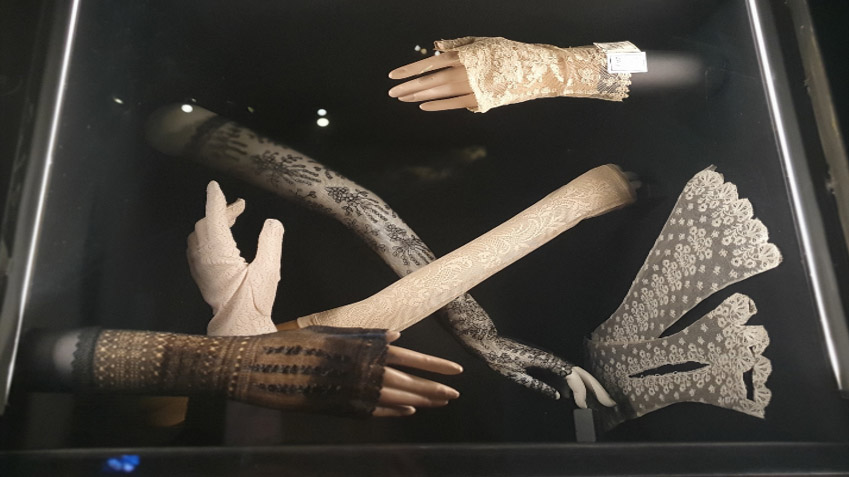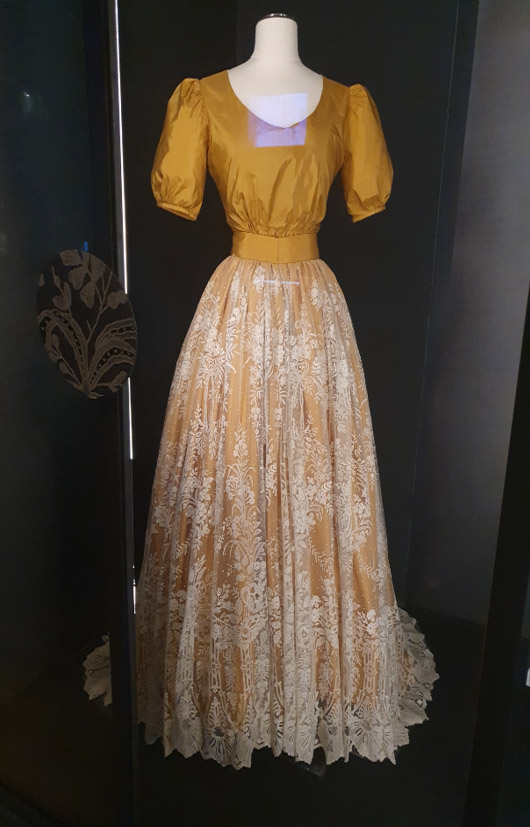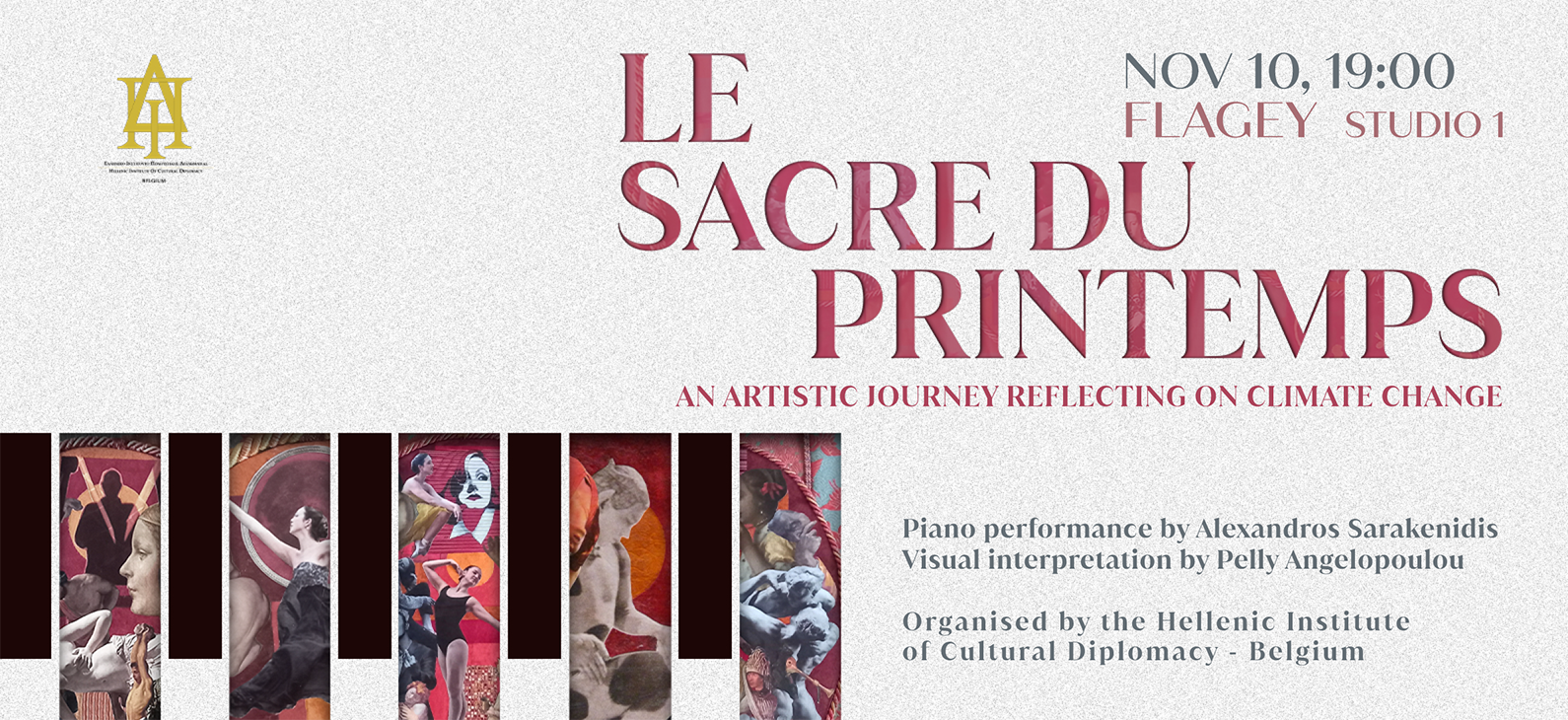
The lace making in Brussels is part of its cultural heritage. With at least 600 years of history, lace has served many purposes. Apart from being used as decoration in garments and household items, it was also a sign of nobility, a distinctive “detail” between the rich and the poor and also a tool of economic and cultural diplomacy, a symbol of power and pride of one's country.
Brussels' lace production started in the 15th century. The city became extremely famous for its lace, having its name attached to a certain kind of one: a pillow, bobbin lace that was originally made from the finest linen threads, so delicate and beautiful that it required special treatment in dark, damp rooms. The delicacy of that lace made it a high end product, loved by the nobility in England and France. Brussels lace was in a list among expensive presents that they were given to Princess Mary of England at New Years' 1543. Lace assumed a symbolic role for European nobility. The English Queen Elizabeth 1 (1533-1603) wore reticella or “cut work” to highlight her role and to express England's political power. During 17th and 18th century, lace thrived. The handmade lace industry had an important part in the economy of many European countries and that meant that there was a great competition and often, conflicts.
In 1662 the English Parliament passed an act to prohibit the import of all foreign lace, because a great amount of money was being spent on that lace and also the English lawmakers wanted to protect the domestic production. However, the English lace was not of the same quality as the Brussels one because the thread that was being used was inferior. Furthermore, the English lace makers didn't have the same savoir faire as the Flemish artisans and the latter ones weren't eager to move to England. So, the merchants that couldn't find the same top quality lace, smuggled Brussels lace and they named it “Point d'Angleterre”,“English Point”. France passed a similar law as England to prohibit the foreign lace, nevertheless, Brussels lace continued to being sold under the name “Point d'Angleterre” that was especially preferred amongst the ladies in the court of Louis XV.
Lace was a symbol of status. In 17th and 18th century it adorned men's and women's clothes. Noble people payed a high price for lace, that sometimes costed higher than the price of a diamond. After the end of the prohibition of Brussels lace in 1699, it became even more popular amongst the European aristocracy circles. Queen Anne favoured it and bought a lot of it and in the courts of George I and George II, Brussels lace became a favourite piece of decoration used on ruffles, lappets, and flounces. Flanders produced top lace quality. It was such in a high demand that it became a cause of wars. It was smuggled and deported even into the New World.
However, the story behind lace's production wasn't as shiny as were clothes decorated with it. That delicate lace was often produced by young girls (for example the girl's orphanage in Antwerp) and women that they weren't paid enough for their craftsmanship while they were working for 14 or 15 hours a day and they were often exposed to poor conditions, abuse and sexual predation. Nevertheless, women working in the lacemaking under all those harsh and often life-threatening conditions, they could provide for themselves, their children and their grandchildren. Those meagre wages that they were receiving, were a path towards minimal financial independence. The most fortunate ones that they were working from their houses, could avoid the dangers of factories.
By the end of 18th century, men didn't decorate their clothes with lace anymore and women clothes became simpler and less adorned. Meanwhile, the French Revolution aspired to banish every reminder of the aristocracy and perceived the lace makers as connected to the nobles. Thus, the popularity of the French Chantilly lace ended, until it was revived under Napoleon's regime at the start of the 19th century. Furthermore, the Industrial Revolution replaced the handwork lacemaking with machines and most of the handmade lace industry was destroyed. The industrialization of lace production afflicted Flanders especially in the 20th century. Belgium's queen Elisabeth tried to protect the handmade lace with the establishment of lace committees in 1910 and 1911 that would control the quality of the lace and would help improve the lives of craftsmen. Another committee was also established that it would promote the sale of Belgian lace abroad, as an Embassy's office of Economic Affairs would do nowadays. The Belgian lace enjoyed a renewed interest abroad, especially among Americans.
Lace also served as an item of connection and support among the Allied Powers in WW1. The Division of Home and Community Life's Textile Collection in the Smithsonian's National Museum of American History displays laces made in Belgium during the Great War. In August 1914, the German army invaded Belgium and Great Britain closed off the Belgian borders to prevent the supplies of the German army. Thus, the Belgian people was cut off from imported food. A special committee for the Relief in Belgium (CRB) was chaired by Herbert Hoover (later U.S President 1929-1933) to negotiate between England and Germany for the delivery of food shipments to Belgium. The negotiations were also about the import of thread for the Belgian craftsmen and the exportation of the Belgian lace. The CRB office in London would manage the orders and deliveries of Belgian laces and the Allied countries supported the Belgians by buying their laces.
To conclude, we could claim that lace has deep roots in Belgium's cultural heritage and it served many socioeconomic purposes. It was an item of decoration, a status symbol, a product made often by exploitation but it was also an item that supported the economy and the morale of Belgian people during hard times. One could say that the lacemaking resembles the art of diplomacy: it requires time and talent, finesse and delicacy and the craftsman should be careful with one's work because it can be destroyed at any time!
Dimitra Kournianou
Trainee HICDB

Fashion and Lace Museum in Brussels (photography by the author)
April 2022

Fashion and Lace museum in Brussels (photography by the author)
April 2022
References:
https://diplomatmagazine.eu/2020/12/06/lace-and-diplomacy/
http://diplomatic-world.com/?p=3454
https://en.wikipedia.org/wiki/Brussels_lace?fbclid=IwAR0abqvyPujB8LiGU08Nx37kKZrXv3wmbqL0tI1vQIbVzjm0wnl0B3CXrxM
https://www.si.edu/spotlight/women-in-wwi/belgian-war-lace?bclid=IwAR3DBJdyta4pDnsf5KqxfCb9AYCsEJ8zCrwkuBA_IS29w8oFAlTJTtGP4_Q
https://blog.tepapa.govt.nz/2016/09/28/the-power-of-lace-making-european-splendour-1500-1800-te-papa/?fbclid=IwAR1zAEr0S6si-Yyd6XTKBzxanIidnjIbBLgw64zedRfurVWN65l8BF7UB1g
https://laceincontext.com/category/lacemakers-and-politics/?fbclid=IwAR2E00Qnxr3Y6abzF8v_PlGSZ_HIeTz6dPr0RalWDgcZ9HODGjUVOiYMtjo
https://laceincontext.com/category/belgian-lace/?fbclid=IwAR0xYbkkjgFoelyI4ITEWBLG8a5Z0-ywcEObLZ6hfaBEIT7CSftX9GCGWuE
https://www.visitflanders.com/fr/themes/artisanat-d-art/dentelle/
https://handwovenmagazine.com/beweave-it-chantilly-lace/
- Tags:
- Articles
- Dimitra Kournianou



